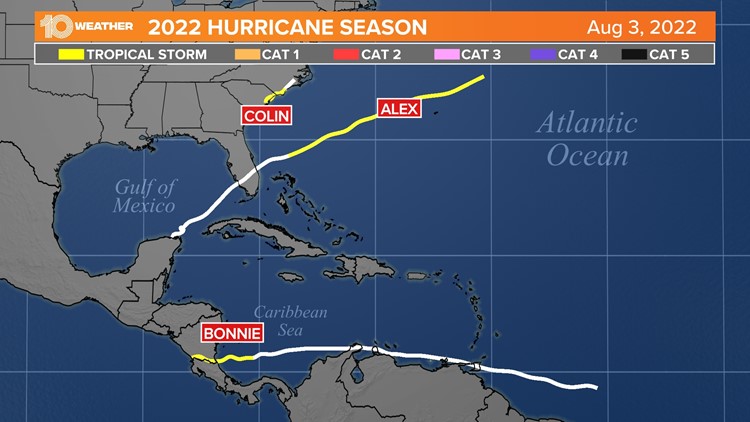ST. PETERSBURG, Fla. — Back in late May, the National Oceanic and Atmospheric Administration (NOAA) put out its first Atlantic hurricane season forecast for 2022.
NOAA predicted an above-average season with a range of 14-21 named storms, six to 10 hurricanes and three to six major hurricanes — a Category 3 storm or higher. Overall, they gave a 65% chance of an above-normal season.
On Thursday, NOAA updated its forecast numbers for the rest of the season — still indicating an above-average season. Forecasters wondered, will the recent quietness across the Atlantic allow NOAA to lower the likelihood of an active season?
Or is activity over the next few months expected to increase, keeping us on track for an above-average season?
The answer, it turns out, appears to be a very active season remains.


Has it been a slow season?
We are actually on track for an average season with three named storms so far. We average our third named storm by Aug. 3 with our first hurricane occurring around Aug. 11 based on an average season.
But those three storms have been weak and very brief, only lasting a day or two. That means our Accumulated Cyclone Energy, or ACE, is well below-average for the season. ACE is used to quantify how much energy is used by a tropical system over its lifetime.
The seasonal ACE is a combination of all the storms put together for the year.

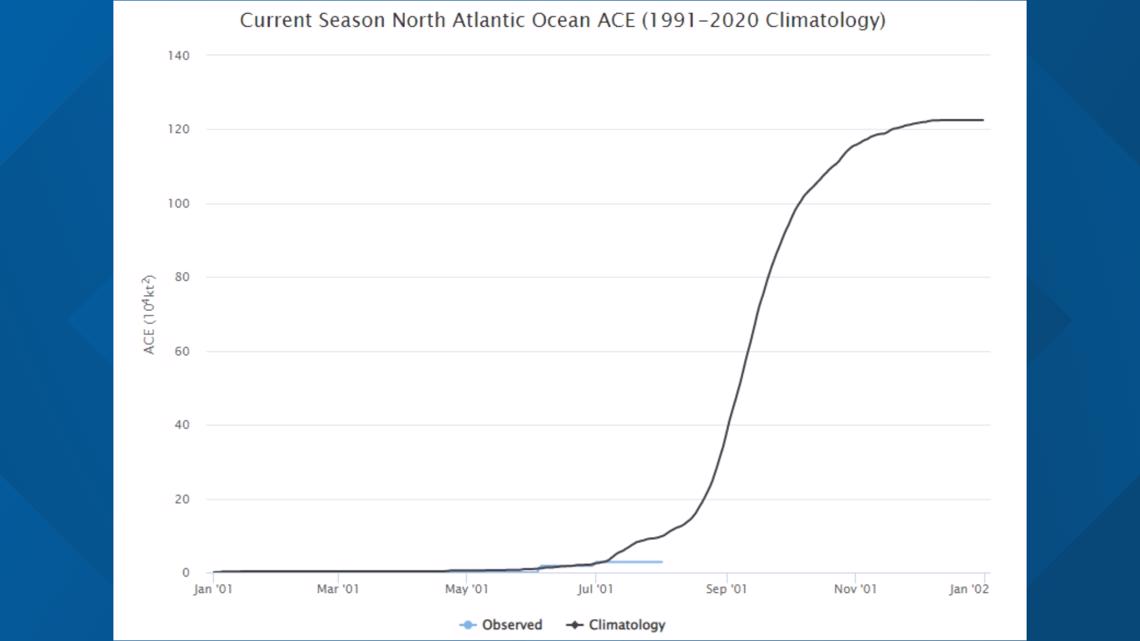
The blue line above is our current ACE for the year, which is currently at 2.8. The black line shows where we should be for this time of year at an ACE of 10.4. So our ACE is less than 30 percent of normal for the year.
So while we have seen an average amount of named storms, the intensity and lifetime of those storms have been below-average.
How did we get here?
On June 5, Tropical Storm Alex officially formed in the Atlantic but quickly turned post-tropical on June 6.
After Alex, we waited nearly a month until Tropical Storm Bonnie developed on July 1 as it moved toward Central America. Bonnie then made landfall and moved into the Pacific Basin on July 2.
Quickly on the heals of Bonnie, Tropical Storm Colin developed off the coast of the Carolinas on July 2 and weakened to a depression on July 3.

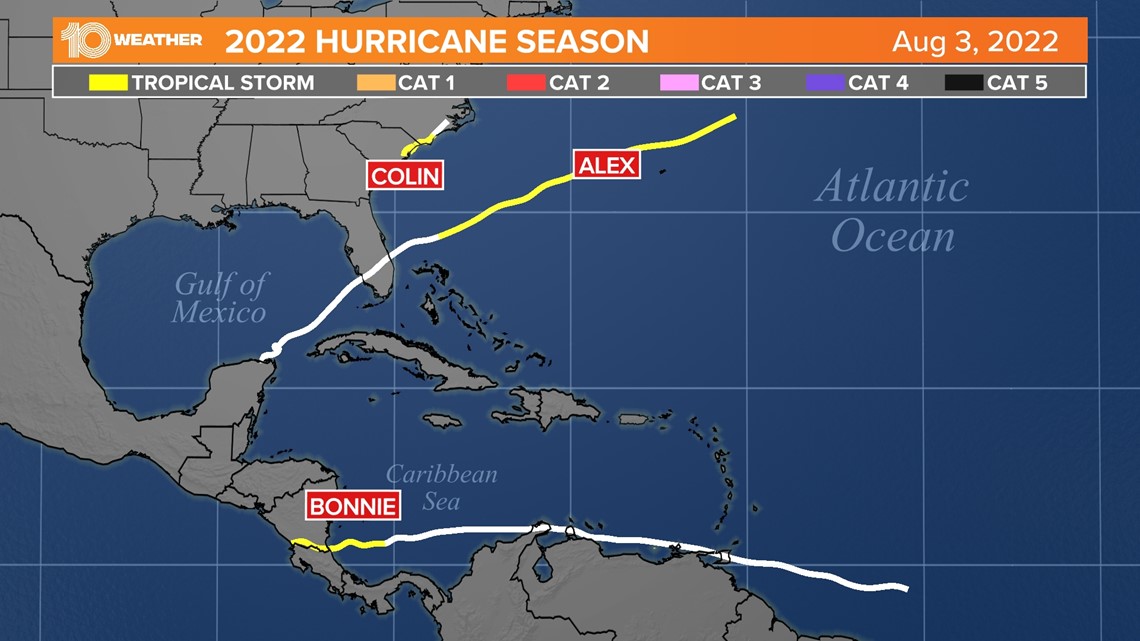
Since then, there have been no new tropical developments in the Atlantic and tropical development over the next five days is not expected.
What's keeping things quiet?
Saharan dust (dry air), sinking air and above-average wind shear have paused tropical development for the time being. A lot goes into developing a tropical storm or hurricane, but there are three main factors: low wind shear, lots of moisture and warm sea surface temperatures.
We have warm water temperatures... but that's it! This is why things have been inactive for more than a month now.

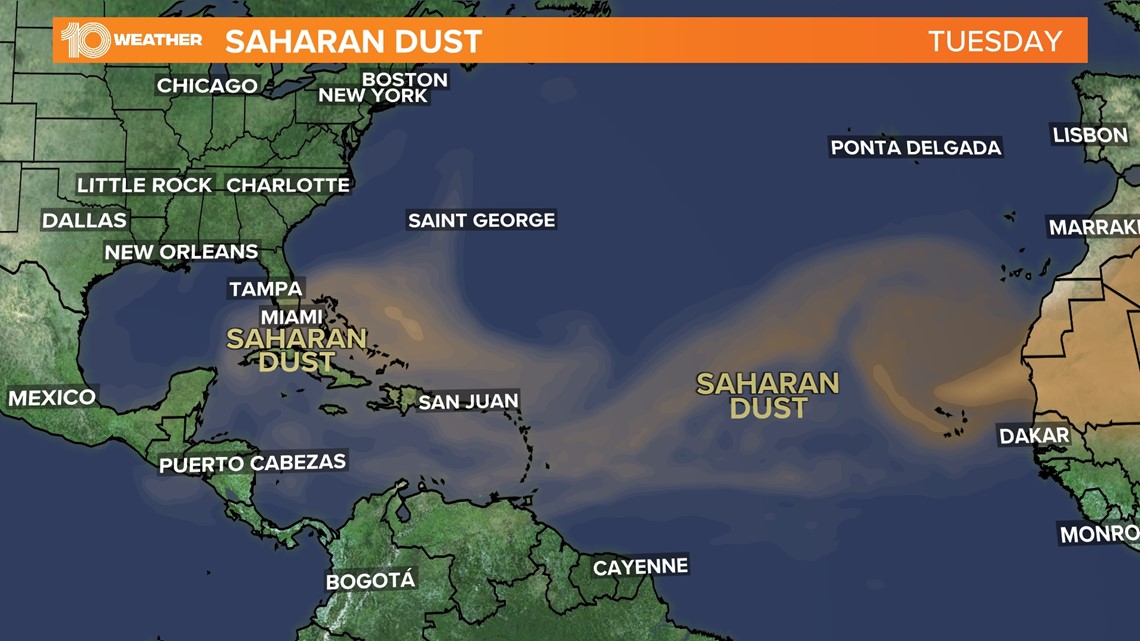
What's next?
The National Hurricane Center is not forecasting any tropical development over the next five days. Looking at the latest models, it is looking like things will stay quiet for at least another week or so. Things could start to change toward the middle of August as we watch a couple of waves move off the coast of Africa and towards the Caribbean.
Beyond a week models become less reliable, but other long-range indicators can be examined. These more climate-driven indicators still point toward an active season.
La Niña is still in control in the Pacific, which tends to favor lower wind shear in the Atlantic. Lower wind shear can allow more storms to develop and those storms to become stronger.
Another factor that favors an active season is current sea surface temperatures. Hurricanes use warm water temperatures as an energy source. Most of the Gulf through the Caribbean and into the eastern Atlantic are seeing above-average water temperatures.

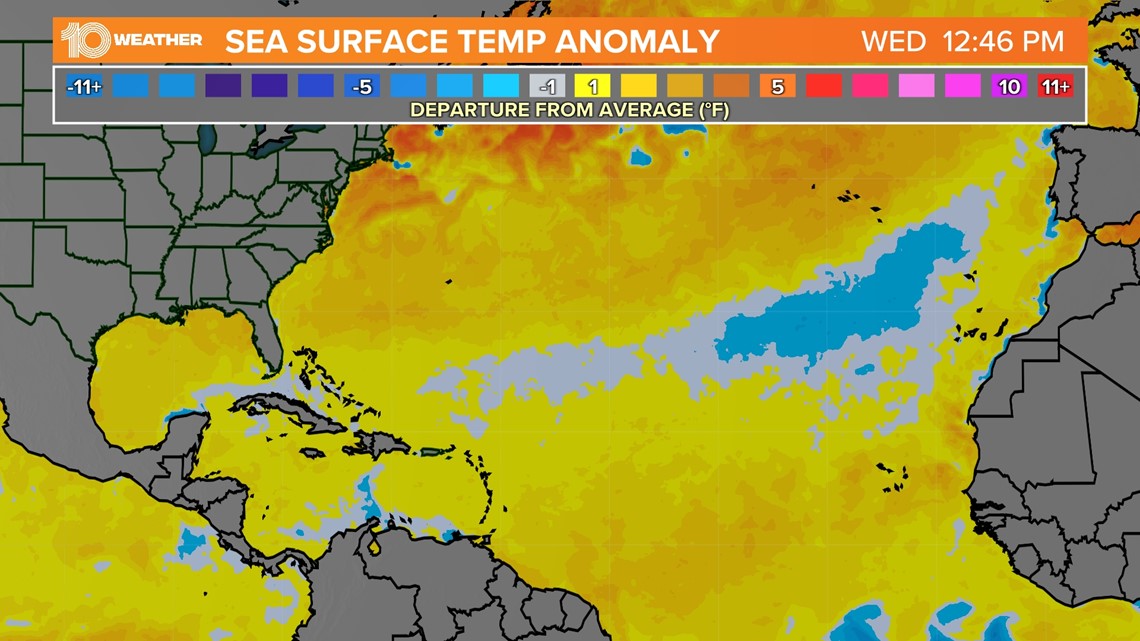
Overall...
- There has been no tropical development for over a month now.
- No tropical development is expected through the first week of August.
- The most active past of hurricane season is still coming (August-October).
- We are still forecasting an above-average season.
- NOAA on Aug. 4 indicates a very active season remains.

